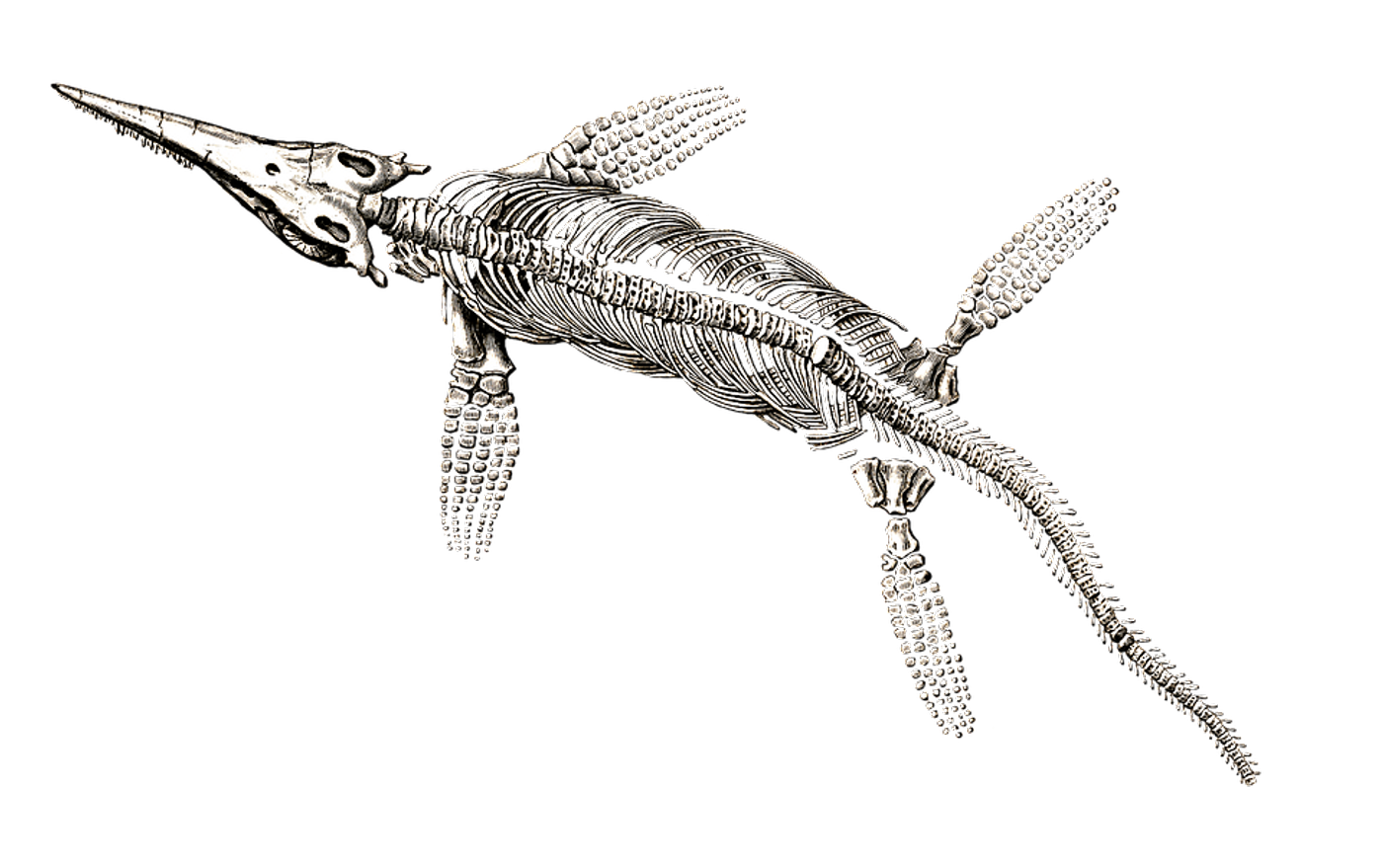The rediscovery of ichthyosaur casts and a case for highlighting museum collections
In recent years, Mary Anning has become known for the important paleontological work she did during her lifetime (1799-1847). She has been called an unsung hero in paleontology for the discoveries she made in Lyme Regis, England—now referred to as the Jurassic Coast—that included two nearly complete plesiosaur skeletons, the first pterosaur skeleton outside of Germany, and numerous fish fossils. Her thoughts and observations also led to the discovery that coprolites were fossilized feces and that belemnite fossils contained fossilized ink sacs. But, perhaps, her most famous discovery was that of the first ichthyosaur skeleton.
In 1811, when Anning was 12, her older brother, Joseph, found a fossilized skull. Anning then spent hours digging the outline of a 5.2-meter-long skeleton. Townspeople thought it was a monster, scientists thought it was a crocodile, and eventually, it was named Ichthyosaurus (“fish lizard”) even though we now know it was a marine reptile. This find, and many others, are now in the collections of the National History Museum London.
Based on Anning’s records, we know that she discovered many fossils in Lyme Regis. In fact, a skeleton described in 1819 by Sir Edward Home and named “Proteosaurus” was likely found by Anning. Today, we know it was the first complete ichthyosaur skeleton discovered. The fossil was housed in the collections of the Royal College of Surgeons, but was subsequently destroyed in a bombing raid in World War II. As the first complete ichthyosaur skeleton, this was an immense loss for science.
Just this month, however, researchers Dean Lomax from the University of Manchester in the UK and Judy Massare from the State University of New York at Brockport in the USA, announced the rediscovery of two casts of this all-important fossil. Ichthyosaurs were ancient marine predators, living about 251 million years ago.
One cast each is held in the collections of the Peabody Museum at Yale University, USA and the Museum für Naturkunde in Berlin, Germany. Accession records do not indicate where these casts were made, but history tells us it must have been between 1818 (when the fossil was found) and 1930 (when it was destroyed). The casts showcase morphologies which provide taxonomic descriptions, even though there are some inaccurate details in the fins, when compared to Home’s original illustrations.
The rediscovery of these fossils highlights the need for accurate museum collections. Museum collections house thousands to millions of artifacts, depending on their size. But, even the smallest, regional museums house important scientific and cultural histories. In the case of these casts, neither were identified in their respective collections, as collections are staffed by curators who cannot be specialists for every organism. Regardless, the rediscovery of the first complete ichthyosaur fossil casts highlights the importance of museum collections, and should illuminate the need for researchers to carefully examine fossils and/or casts in the hopes of identifying other lost-to-science specimens.
Sources: National History Museum London, Royal Society 1819, Royal Society 2022









